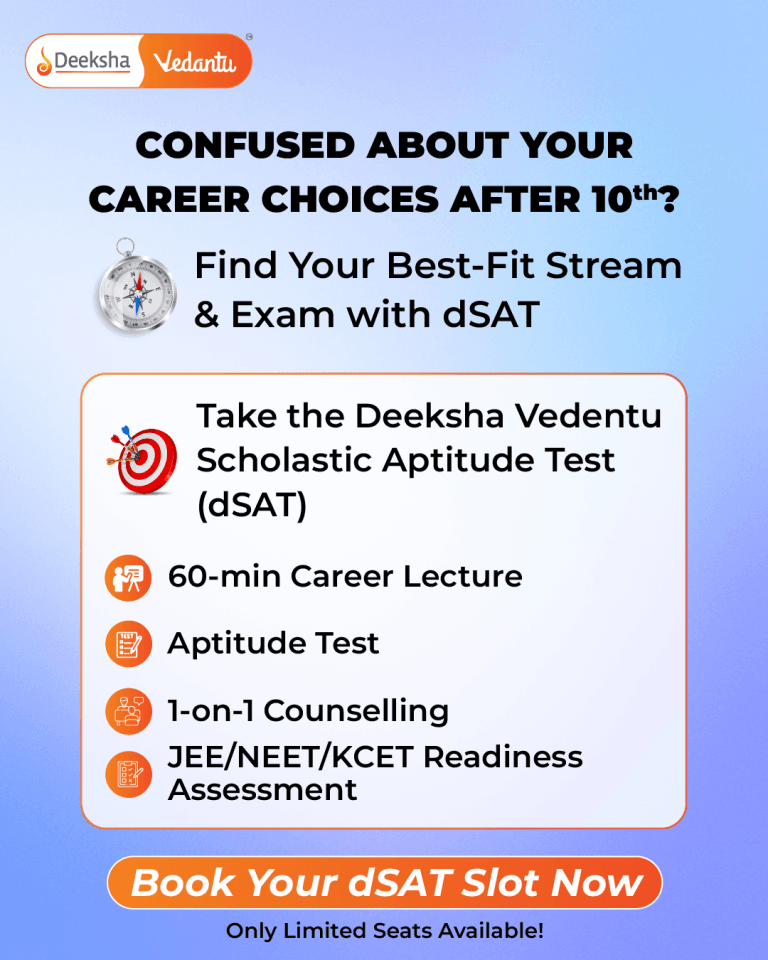Light: Reflection and Refraction Class 10 Science MCQs
The theory of light, reflection, and refraction is absolutely engaging for the Class 10 students. Cracking MCQs of Chapter 10 Light Reflection and Refraction will unfold your concept for this chapter in an effective way. You will also improve your pace, manage time efficiently and master the skills to answer questions accurately.If you are well acquainted with all the concepts, an adequate practice of MCQs is all you need to score better in the board exam. The students must mainly concentrate on MCQ Questions for Class 10 Science Chapter 10 Light Reflection and Refraction with Answers. Practicing every day is incredibly useful for students to improve their conceptual command.
Light Reflection and Refraction Class 10 MCQs Questions with Answers
1) Rays from Sun converge at a point 15 cm in front of a concave mirror. Where should an object be placed so that size of its image is equal to the size of the object?
- 15 cm in front of the mirror
- 30 cm in front of the mirror
- between 15 cm and 30 cm in front of the mirror
- more than 30 cm in front of the mirror
Answer: 2
2) A concave mirror of radius 30 cm is placed in water. Its the focal length in air and water differs by
- 15
- 20
- 30
- 0
Answer: 4
3) In order to obtain a magnification of, -0.6 (minus 0.6) with a concave mirror, the object must be placed:
- At the focus
- Between pole and focus
- Between focus and centre of curvature
- Beyond the centre of curvature
Answer: 2
4) A convex lens of power P is immersed in water. How will its power change?
- A) Increases
- B) Remain unchanged
- C) Decreases
- D) Increases for red colour and decreases for blue colour
Answer: 3
5) Convex mirror is also called
- Converging Mirror
- Diverging Mirror
- Both A and B
- None
Answer: 2
6) Which position of the object will produce a magnified virtual image if a concave mirror of focal length 15 cm is being used?
- 10 cm
- 20 cm
- 30 cm
- 35 cm
Answer: 1
7) If an incident ray passes through the focus, the reflected ray will
- pass through the pole
- be parallel to the principal axis
- retrace its path
- pass through the centre of curvature
Answer: 2
8) Focal length of the plane mirror is
- At infinity
- Zero
- Negative
- None of these
Answer: 1
9) When a ray of light goes from one medium to another, there is
- Always a change in its speed as well as direction
- No change in speed and direction
- A change in speed but no change in direction
- A change in direction but constant speed
Answer: 1
10) What is the frequency of violet colour of wavelength 4000 A?
- 7.5 x 1010 Hz
- 7.5 x 1012 Hz
- 7.5 x 1014 Hz
- 7.5 x 1016 Hz
Answer: 3
11) For a real object, which of the following can produce a real image?
- Plane mirror
- Concave mirror
- Concave lens
- Convex mirror
Answer: 2
12) When the object is placed between f and 2f of a convex lens, the image formed is
- at f
- at 2f
- beyond 2f
- between O and f
Answer: 3
13) You are given water, mustard oil, glycerine and kerosene. In which of these media a ray of light incident obliquely at the same angle would bend the most?
- Kerosene
- Water
- Mustard oil
- Glycerine
Answer: 4
14) The angle between an incident ray and the plane mirror is 30°. The total angle between the incident ray and reflected ray will be:
- 30°
- 60°
- 90°
- 120°
Answer: 4
15) Which of the following has the highest refractive index?
- Air
- Ice
- Water
- Diamond
Answer: 4




Get Social